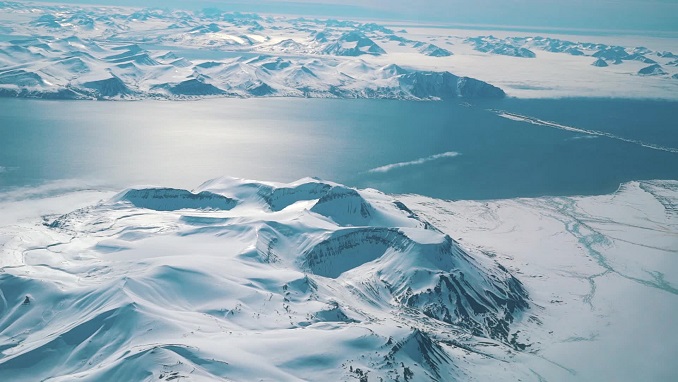China and Russia have already begun their battle for supremacy in the Arctic, where new lucrative trade routes and oil and gas drilling opportunities have opened due to global warming, Nikkei Asian Review reports.
Arctic sea ice has been steadily shrinking due to our planet’s rising average temperatures. The maximum ice coverage hit the lowest level on record in 2017. By as early as 2030, the Arctic Ocean could be largely free of ice in the summer, according to the Arctic Monitoring and Assessment Program, a working group under the intergovernmental Arctic Council.
The trend is opening up new shipping routes that were once considered untraversable, with major economic and geopolitical implications. Immediate benefits would come from shorter shipping times. Sailing from Yamal to East Asia takes about two weeks, half the time needed for the route through the Suez Canal and the Indian Ocean, according to a survey by shipping companies.
In January, the Chinese government published its first policy document outlining its Arctic strategy. The paper referred to China as “a near-Arctic nation” (never mind that its most northerly settlement is no closer to the Arctic than Berlin is). It also linked China’s Arctic plans with the Belt and Road Initiative, a scheme for building infrastructure abroad to improve links between Asia, Africa and Europe.
China’s ambitions are fueled by a wide range of interests. It wants access to the Arctic for its researchers so they can work out how melting ice affects weather patterns, among other things. Their findings could help China devise responses to its problems with air pollution and water scarcity. China is also keen to tap into the Arctic resources that will become easier to exploit as the ice cap retreats. They include fish, minerals, oil and gas. The region could hold a quarter of the world’s as-yet-undiscovered hydrocarbons, according to the United States Geological Survey. Chinese firms are interested in mining zinc, uranium and rare earths in Greenland.
There are no heated territorial disputes in the Arctic, but there are sensitivities, including Canada’s claim to the North-West Passage, a trans-Arctic waterway that America regards as international—i.e., belonging to no single state.
According to The Economist, China does not want to be seen as a clumsy interloper. One point of the policy document was to allay fears that China might muscle its way into the Arctic as it has in the South China Sea. The paper stresses that China will play by international rules and co-operate with the Arctic Council (its members include polar great-powers to reckon with: America and Russia).
Plenty of non-Arctic countries, including European ones, have similar dreams. But China is “by far the outlier” in terms of the amount of money it has pledged or already poured into the region, says Marc Lanteigne of Massey University in New Zealand. Its biggest investments have been in Russia, including a gas plant that began operating in Siberia in December. Russia was once deeply cynical about China’s intentions. But since the crisis in Ukraine, it has had to look east for investment in its Arctic regions.












